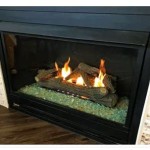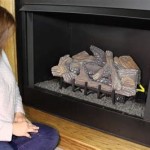Creating a DIY Stone Fireplace: A Comprehensive Guide
A stone fireplace serves as a captivating focal point in any living space, imbuing it with warmth, character, and a timeless aesthetic. While professional installation can be costly, constructing a stone fireplace through a do-it-yourself approach offers a rewarding and economically viable alternative. This article provides a comprehensive guide to building a DIY stone fireplace, outlining essential considerations, materials, tools, and step-by-step instructions for successful project completion.
Planning and Preparation: Foundations for Success
Before embarking on the construction process, meticulous planning and preparation are paramount. This initial phase establishes the groundwork for a structurally sound and aesthetically pleasing fireplace. Several crucial aspects demand careful consideration.
Local Building Codes and Permits: The initial step involves researching and adhering to all applicable local building codes and regulations. Fireplace construction is often subject to stringent safety requirements due to the inherent fire hazard. Obtaining the necessary permits before commencing work is crucial to avoid potential legal ramifications and ensure compliance with safety standards. These regulations often dictate clearances from combustible materials, chimney specifications, and firebox construction techniques. Contacting the local building department is the definitive method for acquiring specific code information relevant to the project location.
Fireplace Design and Dimensions: Determining the desired design and dimensions of the fireplace is an essential prerequisite. Consider the overall style of the room and select a design that complements the existing décor. Research various fireplace styles, including traditional, modern, and rustic designs, to identify the preferred aesthetic. Accurately measure the available space and calculate the desired dimensions of the fireplace, taking into account the size of the firebox, hearth, and mantel. Develop detailed sketches or blueprints that clearly depict the fireplace's layout, including precise measurements and material specifications. This visual representation will serve as a valuable guide during the construction process.
Material Selection: Choosing the appropriate materials is crucial for ensuring the longevity, safety, and aesthetic appeal of the fireplace. Natural stone, manufactured stone veneer, and brick are common choices, each offering unique characteristics. Natural stone provides a distinctive and rustic appearance, while manufactured stone veneer offers a lighter and more cost-effective alternative. Brick presents a classic and timeless aesthetic. Select a stone type that aligns with the desired design and budget, considering factors such as color, texture, and size. Other essential materials include firebricks for the firebox lining, mortar for bonding the stones, and a non-combustible hearth material, such as slate or ceramic tile.
Tool Acquisition: Assembling the necessary tools is essential for efficient and effective construction. Essential tools include a masonry saw for cutting stones, a trowel for applying mortar, a level for ensuring accurate alignment, a measuring tape for precise measurements, a hammer for shaping stones, a chisel for fine adjustments, safety glasses for eye protection, work gloves for hand protection, and a mixing container for preparing mortar. Having the right tools readily available will streamline the construction process and improve the overall quality of the finished fireplace.
Construction Process: Laying the Stones
With the planning and preparation phases complete, the construction process can commence. This involves carefully laying the stones, ensuring proper alignment, and applying mortar to create a structurally sound and aesthetically pleasing fireplace. The construction process can be broken down into several key steps.
Foundation Preparation: A solid and level foundation is essential for supporting the weight of the stone fireplace. If the existing floor is not sufficiently strong or level, it may be necessary to construct a new concrete foundation. This typically involves pouring a concrete slab reinforced with rebar. Ensure the foundation is properly cured before commencing the construction of the fireplace structure. Consult with a structural engineer to determine the appropriate foundation design and specifications, considering the soil conditions and the weight of the fireplace.
Firebox Construction: The firebox is the heart of the fireplace, where the fire burns. It must be constructed using fire-resistant materials, such as firebricks, to withstand the high temperatures. Lay the firebricks according to the design, using fire-resistant mortar to create a sealed and heat-resistant chamber. Ensure the firebox is properly sized to accommodate the desired fire size and to allow for adequate airflow. Pay close attention to the firebox dimensions and clearances to ensure proper combustion and prevent smoke from entering the room.
Chimney Construction or Installation: The chimney is responsible for safely venting smoke and combustion gases from the fireplace. If constructing a chimney, follow local building codes and guidelines regarding chimney height, flue size, and material specifications. Alternatively, a prefabricated metal chimney can be installed, following the manufacturer's instructions. Ensure the chimney is properly insulated to prevent heat loss and condensation, which can contribute to chimney damage. Regular chimney inspections and cleaning are crucial for preventing fires and ensuring safe operation.
Stone Laying: With the foundation, firebox, and chimney in place, the process of laying the stones can begin. Apply mortar to the back of each stone and carefully position it on the fireplace structure, ensuring proper alignment and spacing. Use a level to ensure each stone is level and plumb. Stagger the joints between the stones to create a stronger and more visually appealing structure. As the stones are laid, periodically clean the excess mortar from the surface to prevent staining. Consider the overall design and pattern of the stone placement to achieve the desired aesthetic.
Mortar Application and Finishing: After laying the stones, apply mortar to fill the joints between the stones. Use a trowel to carefully apply the mortar, ensuring it is evenly distributed and fills all voids. After the mortar has partially dried, use a tool to shape and finish the mortar joints. Various mortar joint styles can be used, such as flush joints, recessed joints, and raised joints. Choose a joint style that complements the overall design of the fireplace. Allow the mortar to fully cure before using the fireplace.
Safety Considerations and Best Practices
Safety is of paramount importance when constructing a stone fireplace. Adhering to safety precautions and best practices is essential for preventing accidents and ensuring the safe operation of the fireplace. Several key considerations should be observed.
Personal Protective Equipment (PPE): Always wear appropriate personal protective equipment (PPE) when working on the fireplace project. This includes safety glasses to protect the eyes from flying debris, work gloves to protect the hands from cuts and abrasions, and a dust mask to protect the lungs from dust and mortar particles. Wearing PPE is essential for minimizing the risk of injury.
Proper Ventilation: Ensure adequate ventilation when working with mortar and other materials that may release harmful fumes. Work in a well-ventilated area or use a respirator to protect the lungs from inhaling toxic fumes. Proper ventilation is essential for preventing respiratory problems.
Fire Safety: Exercise extreme caution when working with fire and flammable materials. Keep a fire extinguisher nearby and be prepared to extinguish any accidental fires. Never leave a burning fire unattended and ensure the firebox is properly enclosed. Regular chimney inspections and cleaning are crucial for preventing chimney fires.
Structural Integrity: Ensure the fireplace structure is structurally sound and capable of supporting its own weight. Consult with a structural engineer to determine the appropriate foundation design and construction techniques. Improper construction can lead to structural failure and potentially dangerous situations.
Clearances from Combustible Materials: Maintain adequate clearances between the fireplace and combustible materials, such as wood framing and furniture. Local building codes specify minimum clearance requirements to prevent fires. Adhering to these clearances is essential for ensuring fire safety.
Professional Inspection: After completing the fireplace construction, it is highly recommended to have it inspected by a qualified professional. A professional inspection can identify any potential safety hazards or structural problems that may have been overlooked. This inspection will provide peace of mind and ensure the fireplace is safe to operate. A certified chimney sweep is an excellent choice for this inspection. They can assess the fireplace and chimney system for proper functionality and safety.
By following these guidelines and adhering to safety precautions, individuals can successfully construct a DIY stone fireplace that adds warmth, beauty, and value to their homes. Remember that thorough research, detailed planning, and meticulous execution are essential for achieving optimal results.

How To Build A Diy Stone Fireplace Boxwood Design Co

Diy Overgrouted Stone Fireplace Shoe Makes New
.jpg?strip=all)
Tips And Tools For Professional Stacked Stone Fireplaces

Thin Stone Veneers Make A Fireplace Update Easy

Thin Stone Veneers Make A Fireplace Update Easy

Diy Painted Stone Fireplace Refresh Live Edge Mantle Lemon Thistle

Easy L And Stick Stone Fireplace Surround Sondra Lyn At Home

Diy Faux Cast Stone Fireplace Part 1 Demo And Tiling The Hearth Top Shelf

How To Build An Outdoor Stacked Stone Fireplace

Faux Stone Fireplace Entertainment Center Genstone
Related Posts








